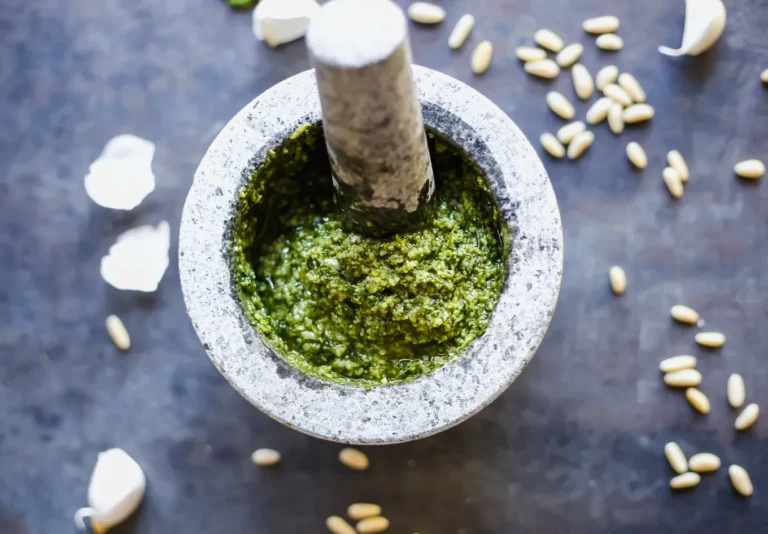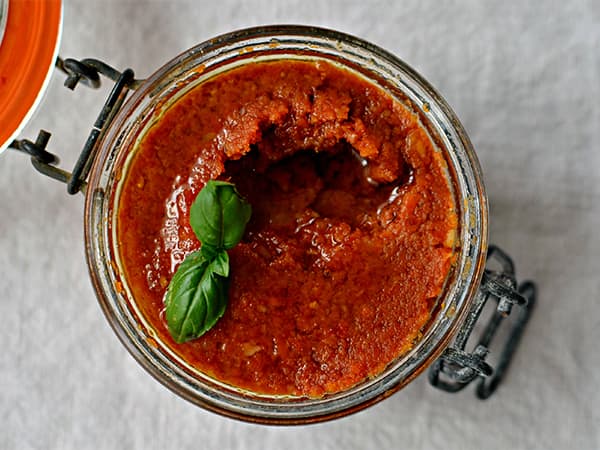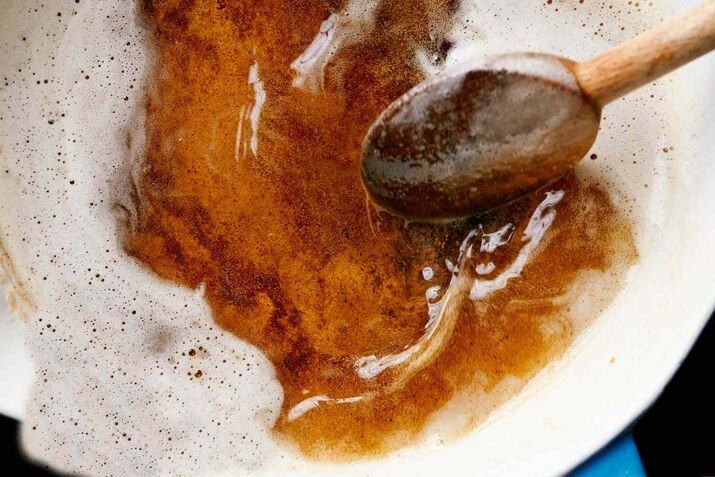Creating a rich, velvety butter sauce is an art form that elevates any dish, especially pasta. The secret lies in achieving the perfect sauce consistency—neither too runny nor too thick, but just right. In this comprehensive guide, we’ll explore the essential techniques and tips to master this culinary skill.
From adjusting with pasta water to utilizing thickening agents, reducing the sauce, and preventing a watery result, you’ll be equipped with all the knowledge you need to create the perfect butter sauce every time.

Adjusting with Pasta Water
One of the most effective techniques for achieving the perfect butter sauce consistency is the strategic use of pasta water. This starchy liquid, often discarded, is a hidden gem in the culinary world, capable of transforming your butter sauce from ordinary to extraordinary.
When cooking pasta, reserve a cup of the cooking water before draining. This water contains starches released from the pasta, which act as natural thickening agents. Here’s how to use pasta water effectively:
- Incorporate Gradually: After you’ve melted your butter and started to form your sauce, add the reserved pasta water a little at a time. Stir continuously to allow the starches to blend with the butter, creating a smooth and cohesive sauce.
- Control Consistency: Adjust the amount of pasta water according to the desired consistency. If your sauce is too thick, add more water. If it’s too thin, let it reduce while stirring, or add less water initially.
- Enhance Flavor: The starchy water not only thickens the sauce but also helps the butter adhere to the pasta, enhancing the overall flavor and texture of the dish.

Incorporating pasta water is not just about thickening; it’s about creating harmony in the sauce. The starch in the water acts as a binder, ensuring that the sauce clings to each strand of pasta, making every bite deliciously coated. Moreover, the use of pasta water is a time-honored Italian tradition, underscoring its effectiveness and authenticity in achieving the perfect butter sauce consistency.

Thickening Agents
Sometimes, pasta water alone isn’t enough to achieve the desired thickness for your butter sauce. In such cases, you can turn to various thickening agents. These ingredients help to create a rich, creamy consistency without compromising the flavor.




- Flour or Cornstarch: Create a roux by combining equal parts flour and butter, cooking until it forms a smooth paste. Gradually whisk this into your sauce to thicken it. Alternatively, dissolve cornstarch in cold water and add it to the sauce, stirring until thickened.
- Egg Yolks: Whisk egg yolks in a separate bowl, then slowly add a small amount of the hot butter sauce to temper them. Once tempered, add the yolk mixture back into the sauce, stirring constantly to prevent curdling. This technique not only thickens the sauce but also adds a luxurious texture.
- Cheese: Grated cheese, such as Parmesan or Pecorino, can be stirred into the butter sauce to thicken it while adding depth of flavor. The cheese melts into the sauce, creating a creamy and cohesive consistency.
- Cream: Adding cream to your butter sauce can enhance its richness and thickness. Unlike milk, cream provides a substantial body to the sauce, making it more luscious. Simply incorporate it gradually and let the sauce simmer to meld the flavors and achieve the perfect consistency.
These thickening agents are versatile tools in your culinary arsenal. Each brings a unique texture and flavor profile to the sauce, allowing you to customize it according to your preferences. Flour and cornstarch offer a neutral thickening effect, while egg yolks and cheese contribute to a richer, more complex sauce. Cream, on the other hand, amplifies the decadence, turning a simple butter sauce into a gourmet delight.
Reducing the Sauce
Reduction is a classic culinary technique used to concentrate flavors and thicken sauces. By allowing the liquid in the sauce to evaporate, you achieve a more intense flavor and a thicker consistency.

- Simmer Gently: Once your butter sauce is prepared, let it simmer over low to medium heat. Stir occasionally to prevent sticking or burning. This slow cooking process allows the water content to evaporate, concentrating the flavors and thickening the sauce.
- Monitor Consistency: Keep an eye on the sauce’s consistency as it reduces. You’ll notice it becoming thicker and more cohesive. Be patient, as rushing this process can result in burning or uneven thickness.
- Balance Flavors: As the sauce reduces, taste it periodically. Reduction can intensify both the desired and undesired flavors, so be prepared to adjust seasoning accordingly.
- Adding Aromatics: During the reduction process, consider adding aromatics such as garlic, shallots, or herbs. These ingredients infuse the sauce with additional layers of flavor, making it more complex and interesting. Sauté the aromatics in butter before adding the liquid components, then let them simmer together as the sauce reduces.
Reducing the sauce is an essential step in achieving the perfect butter sauce consistency. It allows you to control the thickness precisely while enhancing the sauce’s flavor profile. The key is patience and attention to detail, ensuring that the sauce reaches the ideal consistency without compromising its taste.
Reduction not only thickens the sauce but also melds the flavors, creating a harmonious and robust profile. By integrating aromatics, you can elevate the sauce further, adding depth and richness that make every bite memorable.
Preventing a Watery Sauce
Nothing is more disappointing than a watery butter sauce that fails to cling to your pasta. To prevent this culinary mishap, follow these essential tips:

- Avoid Overwatering: When adding liquid to your sauce, whether it’s pasta water, broth, or cream, do so sparingly. It’s easier to thin a thick sauce than to thicken a watery one.
- Emulsify Properly: Proper emulsification is key to a stable butter sauce. Slowly incorporate the butter into the other ingredients while whisking vigorously. This process helps to create a stable emulsion that resists separation.
- Cook at the Right Temperature: High heat can cause the butter to separate, resulting in an oily or watery sauce. Maintain a moderate temperature to ensure the ingredients blend smoothly and maintain a consistent texture.
- Use Quality Ingredients: High-quality butter and fresh ingredients contribute to a better sauce. Fresh, high-fat butter emulsifies more effectively and adds a richer flavor.
- Consistent Stirring: Stir the sauce consistently during cooking. This helps to distribute the heat evenly and prevents the butter from separating. Use a whisk to ensure a smooth and cohesive texture.
- Right Proportions: Maintain the right proportions of butter to liquid. Too much liquid can overwhelm the butter, resulting in a watery sauce. Start with smaller amounts and adjust as needed.
By following these tips, you can ensure that your butter sauce remains thick and creamy, perfectly coating your pasta. Preventing a watery sauce is all about balance and technique, ensuring that each ingredient contributes to a cohesive and delicious result.
FAQ
Mastering the perfect butter sauce consistency requires a blend of technique, patience, and high-quality ingredients. Whether you’re adjusting with pasta water, utilizing thickening agents, reducing the sauce, or preventing a watery outcome, these tips will guide you toward creating a flawless sauce every time. With practice, you’ll develop the confidence and skill to elevate any dish with a rich, velvety butter sauce that clings perfectly to your pasta.
Achieving the perfect butter sauce consistency is not just a skill but an art that brings out the best in your culinary creations. The right balance of ingredients, careful cooking techniques, and attention to detail can make a significant difference. As you experiment and refine your methods, you’ll discover that creating the ideal butter sauce is a rewarding and delicious journey.
Disclosure: Our blog contains affiliate links to products. We may receive a commission for purchases made through these links. However, this does not impact our reviews and comparisons. We try our best to keep things fair and balanced, in order to help you make the best choice for you.







